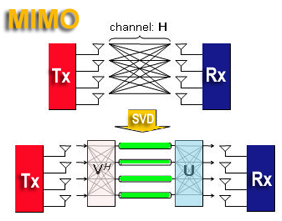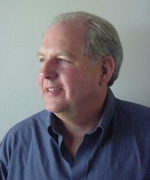UCSD Hosts Launch of Project on Tactical, Mobile Ad-Hoc Networks
By Doug Ramsey
|
Over 65 scientists, engineers and research officers attended the kickoff meeting June 15 in San Diego on a project funded by the Department of Defense's Multidisciplinary Research Initiative (MURI) to develop "space-time processing for tactical mobile ad-hoc networks." The project is led by Jacobs School of Engineering's James Zeidler, a research scientist in the Electrical and Computer Engineering (ECE) department. "This is a big project that incorporates work on half a dozen campuses and constant feedback from the U.S. Army as well as other agencies that see the promise of ad-hoc networking on the battlefield," said Zeidler. "We are extremely pleased with the turnout and active interaction during the meeting among university researchers, delegates from five defense agencies, as well as representatives from nine companies."
|
The kickoff meeting for the MURI project attracted government participants from the Army Research Office, Office of Naval Research, Army Research Laboratory, the Defense Advanced Research Projects Agency, and SPAWAR Systems Center, San Diego. Also on hand: faculty from the four UC campuses involved in the project (San Diego, Irvine, Riverside and Santa Cruz), Brigham Young University and Canada's McMaster University. Interested industry researchers came from Cubic, Ericsson, Lucent Technologies, Northrop Grumman, QUALCOMM, Raytheon, ST Microelectronics, the San Diego Research Center and ViaSat.
Calit²: division director Ramesh Rao delivered opening remarks, followed by an introduction from Robert Ulman of the Army Research Office. Then the directors of the Army Research Laboratory's Information Sciences and Technology office and UCSD's Center for Wireless Communications (Ananthran Swami and Larry Larson, respectively) gave attendees background briefings on their organizations. Both Rao and Larson commented on the strong research foundation that has been created at UCSD from the research funded by the CWC and by Calit² partners. Several CWC and industry- funded Calit² research projects focusing on space time processing have been underway for a few years at UCSD, and the strengths and capabilities resulting from these projects helped the team win the MURI grant.
Lucent's Alex Pidwerbetsky provided a corporate research perspective about his company's work in mobile networked MIMO. Subsequently, principal investigator Zeidler delivered an overview of the project, focusing on the "promise of mobile multiple-input/multiple-output (MIMO) networks." His co-PIs on the project from ECE laid out their respective portions of the research agenda for the next year and beyond:
- Rene Cruz (with visiting professor Michele Zorzi) on radio resource allocation;
- Larry Milstein on waveform design and performance analysis for mobile military ad-hoc networks;
- John Proakis on physical layer optimization with channel state information; and
- Bhaskar Rao on vector quantization techniques for feedback-based MIMO systems.
Another Calit²: researcher - Hamid Jafarkhani of UC Irvine's Center for Pervasive Computing and Communications - spoke about new structures for space-time coding and beam-forming, and their effects on the connectivity of wireless ad-hoc networks.
Topics covered by co-PIs from other universities included physical layer-aware networking (UCSC's JJ Garcia-Luna-Aceves and UCR's Srikanth Krishnamurthy); mobile multi-user MIMO networks (BYU's Lee Swindlehurst); networking through mobile parallel relays (UCR's Yingbo Hua); cognitive radio (Simon Haykin of McMaster); as well as experimental channel characterization and real-time algorithm implementations for multi-user MIMO networks (BYU's Michael Jensen).
Attendees provided positive commets on the quality of the technical presentations and the strength of the project team.
Related Links:
MURI
Army Research Laboratory
Office of Naval Research
SPAWAR Systems Center
UCSD Jacobs School
UC Irvine
UCI Center for Pervasive Computing and Communications
UC Riverside
UC Santa Cruz
Brigham Young University
McMaster University
Lucent/Bell Labs
San Diego Research Center



